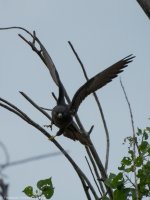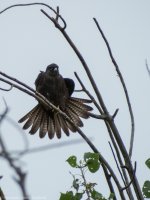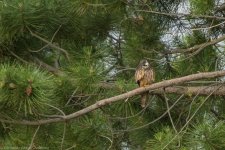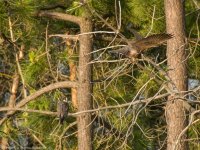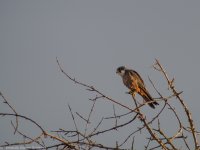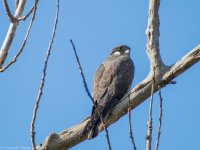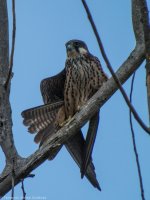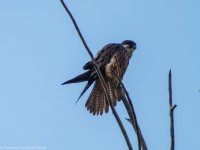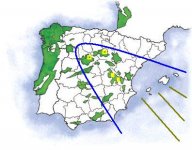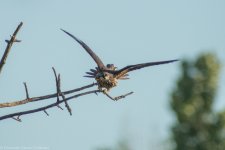Eleonora's falcons have arrive for a month stay near home and I hope this year -with better photographs- I could learn more on their plumages, more than making dark morphs from clear ones, and expecting not to confuse the laters with hobbies
So most of my questions have to do with sex and age of these individuals, and if it is possible with the characters used for clinching these ID's
Photo 1,2 same bird, dark morph ¿male? seems to have yellow cere, but light is not good
Then some pale morphs
Photo 3, another bird,
Photo 4, two more different birds ¿both adult males?
Photo 5, another male
The following photos (next post) are of the next day in a nearby roost, so maybe there are some repeated falcons.
Photos 6,7, same bird, I'd said adult female pale morph (but maybe 2cy?)
Photo 8, other adult bird
So, no juvenile or 2cy so far?
All from Cuenca, Central Spain, from these past two days. I expect no to have dropped any unsuspected hobby in the photos!
So most of my questions have to do with sex and age of these individuals, and if it is possible with the characters used for clinching these ID's
Photo 1,2 same bird, dark morph ¿male? seems to have yellow cere, but light is not good
Then some pale morphs
Photo 3, another bird,
Photo 4, two more different birds ¿both adult males?
Photo 5, another male
The following photos (next post) are of the next day in a nearby roost, so maybe there are some repeated falcons.
Photos 6,7, same bird, I'd said adult female pale morph (but maybe 2cy?)
Photo 8, other adult bird
So, no juvenile or 2cy so far?
All from Cuenca, Central Spain, from these past two days. I expect no to have dropped any unsuspected hobby in the photos!
Attachments
Last edited:




